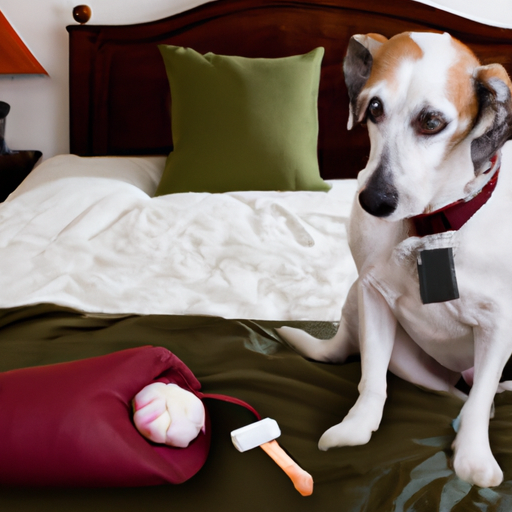Understanding the Risk of Garlic to Your Beloved Pet
Garlic, a staple in many kitchens, may seem harmless, but to your furry friend, it could be a potential threat. Garlic, along with other members of the Allium family, contains compounds that can be toxic to dogs when ingested in large amounts. These compounds can cause damage to your dog’s red blood cells, leading to a condition known as hemolytic anemia.
It’s important to remember, though, that garlic poisoning doesn’t happen instantly. It’s an accumulation over time, or from a significant one-time ingestion. Some dogs might even seem fine initially, but the symptoms can surface after a few days.
Identifying the Symptoms of Garlic Poisoning
If your dog has ingested garlic, you may notice some of the following symptoms:
- Reduced appetite
- Weakness or lethargy
- Pale gums
- Rapid breathing or panting
- Dark-colored urine
Each dog is unique, and the severity of symptoms can vary depending on the amount of garlic consumed, the size of the dog, and their overall health.
First Steps to Take if Your Dog Ingests Garlic
If you suspect your dog has ingested a significant amount of garlic, or if you notice any of the symptoms mentioned above, here are the steps you should take:
- Immediate Action: Remove any remaining garlic from your dog’s reach. This is to prevent them from consuming more.
- Contact a Vet: Reach out to your local vet or a pet poison helpline. They can provide guidance based on your dog’s size, age, and the amount of garlic consumed.
- Monitor Your Dog: Keep a close eye on your dog, noting any changes in behavior or physical condition.
Treating Garlic Poisoning at Home
While it’s crucial to seek professional help, there are a few things you can do at home to help your dog:
- Hydration: Ensure your dog drinks plenty of water. This will help flush out the toxins from their system.
- Nutrition: Provide a balanced diet rich in vitamins and minerals, particularly Vitamin C and E, which can support the body in dealing with the toxin.
- Rest: Allow your pet to rest and recover. Physical exertion could exacerbate the condition.
| Actions | Why |
|---|---|
| Hydration | Helps flush out toxins |
| Nutrition | Provides essential vitamins and minerals |
| Rest | Reduces physical strain on the body |
Preventing Future Garlic Poisoning
Preventing garlic poisoning is straightforward: keep garlic and other Allium-family foods out of your dog’s reach. When it comes to your dog’s diet, it’s always best to stick with dog-safe foods and treats. If you’re unsure about a certain food, consult your vet.
Frequently Asked Questions
Q: Can a small amount of garlic harm my dog?
A: Small amounts might not cause immediate harm, but regular consumption can lead to toxicity.
Q: What other foods are toxic to dogs?
A: Other toxic foods include onions, chocolate, grapes, raisins, and foods containing xylitol.
Q: Should I induce vomiting if my dog eats garlic?
A: Only induce vomiting if advised by a vet. Incorrectly doing so could cause more harm.
Q: How long after eating garlic will a dog show symptoms?
A: Symptoms can appear within a few hours to several days after ingestion.
Remember, when it comes to your dog’s health, it’s always better to be safe than sorry. If you suspect garlic poisoning, seek professional help immediately.



